

Table
Forward-looking statements
this
or consequential damages
any other
in an action of contract, negligence, or other action
of use, data, or
Our commitment
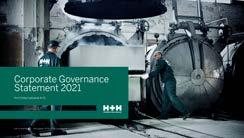
of or in
with the
Integrated reports
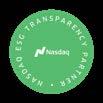
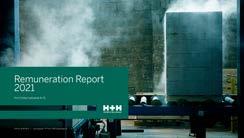
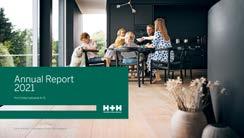
H+H at a glance
H+H is a leading provider of solutions and materials for wall building. Over the recent years, H+H has grown significantly through acquisitions and now has a strong and diversified market position across its geographies, serving as a solid foundation for continued growth.
Founded in 1909
H+H was established in 1909 when Henrik Johan Henriksen and Waldemar Kähler established the joint stone and gravel-pit enterprise 'Singelsforretningen Omø'.
Employees 1,663
We have 1,663 employees working across eight different countries in Northern and Central Europe, of which approximately two thirds work in our factories.
Total Revenue (DKKm) 3,020
Factories 31
In 2021, we generated a total revenue of DKK 3,020 million and an organic growth of 13%. AAC and CSU accounted for 71% and 29% of the total revenue, respectively.
We have 31 factories across Northern and Central Europe with a total annual output of close to 4.5 million cubic metres of wall-building materials. In addition, we are currently expanding one of our AAC factories in the northern part of Poland with a new CSU production line.
Acquisitions 24
Since 2014, we have acquired 24 factories. These have contributed to a significant expansion of our factory network and have more than tripled our white-stone businesses in both Germany and Poland.
Revenue split by product line (FY 2021)
71%
29%
Both products are key components for energy-efficient wall systems.
Aircrete ("AAC") combines strength and durability with fire resistance, low weight, and excellent thermal insulation making it the ideal material for the residential low-rise housing market.
Calcium silicate ("CSU") is a heavy and dense wallbuilding material primarily used for residential high-rise buildings. The product is fire resistant and has a very high degree of sound insulation.
Highlights
During 2021, we made meaningful strides on our continued journey towards carbon neutrality by committing to ambitious science-based emissions-reductions targets.
Steady safety performance
Reduced carbon emissions and carbon per unit produced
0 fatalities
• Sixth consecutive year
• Lost-Time Incident frequency 5
• Zero incidents at 23 out of 31 factories
6%
reduction in direct carbon emission versus base year 2019
Energy intensity down by 2% versus base year 2019
UN Global Compact Sustainable Development Goals ("SDGs")
Our products support SDG11 (Sustainable cities and communities) and SDG-12 (Responsible consumption and production) by nature.
Net-Zero by 2050
We are committed to achieving netzero emissions in our operations and products by 2050.
Lower water usage
H+H has carbon reduction targets verified and approved by the Science Based Targets initiative ("SBTi")
8%
reduction in water intensity versus base year 2019
1.5°C
We have a tangible plan that has been verified and approved by SBTi where we are reducing our own emissions in line with the 1.5-degree scenario in the Paris Agreement.
Business model
Resources People
We value our workforce, recognise the advantages of diversity, and believe in the equality of people
Raw materials
Our products are made of sand, water, and lime, with cement and aluminium added for aircrete
Factory network
We have created a strong network of factories and sales offices with national reach within the countries in which we operate
Unique market conditions for growth
Structural undersupply of housing, demographic growth, urbanisation, and changing housing needs provide solid growth platform
Solid capital structure
Our strong and flexible capital structure supports our continued growth journey and sustainable shareholder valuecreation
Quality manufacturing
We follow a lean manufacturing process to improve efficiency and eliminate waste. Further, targeted capital investments improve reliability, throughput and quality across the production platform
Diversified market
Our business
Value-added sales
We support our customers from the early planning stage and throughout the wall-building process. We aim to be the ideal partner and a one-stop shop for every wall-building project
Added value Customer value
By understanding our customers, their local needs, and the industry trends, we help overcome challenges, elimi nate waste, and manage complexities throughout the wall-building process
Modern and carbon-friendly products
We are Partners in Wall Building delivering trusted, sustainable and innovative solutions which enable better homes and workplaces for our communities
Our product range is diverse, and its flexibility allows for various applications. As a result, the customer segments are also diverse and provide a differentiated risk profile
Strategy execution
We have a strong track record of strategy execution. Through consolidation of the European white-stone markets, we have realised significant synergies related to both pricing, sourcing, and sales channels
Our products offer improved indoor climate and energy savings as well as fire resistance and better acoustic insu lation between rooms. In addition, the products are long-lasting and can be integrated into a circular economy
Safe and attractive work environment
Employment and working conditions must be safe, fair, and non-discrimina tory to attract top talents and support the development and career ambitions of our employees
Shareholder value
We will continue to pursue profitable growth through acquisitions and in vestments in the existing production platform to generate robust, long-term value for our shareholders. Further, H+H may return excess capital to shareholders by means of dividends and/or share buy-back programmes
Partner in Wall Building with industry-leading carbonreduction ambitions
In 2021, we delivered on the promises we made in last year’s Sustainability Report by committing to an ambitious 1.5°C science-based emissions reduction target.
I am proud to share with you that this target has now been validated by the Science Based Targets initiative. In doing so, H+H has become the first manufacturer of AAC and CSU and one of only six companies within the building products sector in Europe to have sciencebased targets approved in line with the 1.5-degree scenario.
It builds on the commitment made by us in 2020 to achieve net-zero emissions in our operations and products by 2050. Taken together, the 1.5°C science-based target and the commitment to net-zero emissions by 2050 provide us with a strong foundation that will help our customers to reduce their emissions.
In this year’s Sustainability Report, we provide a full breakdown of H+H’s emissions in line with the Greenhouse Gas Protocol and outline the decarbonisation levers that H+H has at our disposal to achieve the targets.
The science-based target sets out the reductions that we will make as a company by 2030 in our Scope 1, 2 and 3 greenhouse gas emissions and aligns us to the Paris Agreement and to the EU’s climate goals.
There is growing momentum to decarbonise Europe’s building stock which accounts for a significant share of the continent’s greenhouse gas emissions that cause climate change. Building materials such as AAC and CSU provided by H+H are well-positioned for longterm growth, as they are key components for energy efficient, safe, and affordable housing and help to reduce the life-cycle emissions of buildings.

In this respect, sustainability is a strategic enabler of growth for H+H. Our Sustainability Strategy is based on seizing the opportunity for growth in sustainable building materials, while mitigating the environmental, social and governance risks that are present in our products and operations.
While much of the focus has been on taking a rigorous science-driven approach, H+H has continued to make progress in other areas of sustainability during 2021 with continued support for the UN Global Compact and we are renewing our ongoing commitment to the initiative and its principles.
Health and safety remain a fundamental priority through our focus on Zero Harm. As in 2020, the wellbeing of our employees has continued to be a focus due to the Covid-19 pandemic and we have been able to ensure business continuity while improving our overall safety performance. Additionally, various initiatives and campaigns on mental health have been launched and run across the Group as part of our efforts to manage the effects of the pandemic.
backgrounds in terms of both nationality, prior work experience, gender, and educational background.
Above all, it is our employees that drive our sustainability progress forward by delivering on our promises. I want to thank them for their commitment in 2021 and invite our customers, suppliers, and investors to continue on the sustainability journey with H+H.
Good governance remains the cornerstone of our compliance program and sets the tone with regards to our business integrity and ethical principles.
Following the release of our Diversity Policy in 2020, we are continuing to build a diverse organisation with a solid mix of competences with a variety of
Michael Troensegaard Andersen CEO
In 2021, H+H delivered on the promises it made in last year’s Sustainability Report by committing to an ambitious
science-based emissions reduction target
"H+H has become the first manufacturer of AAC and CSU and one of only six companies within the building products sector in Europe to have science-based targets approved in line with the 1.5-degree scenario. We want all our partners to benefit from this."
purpose We are Partners in Wall Building delivering trusted, sustainable and innovative solutions which enable better homes and workplaces for our communities
Our promises
Partners in Wall Building
As your trusted partner, H+H delivers industry-leading customer excellence and a comprehensive product portfolio. We provide innovative solutions to all of our partners’ building needs from design and planning to delivery, assembly and problem solving.
We understand wall building and have a comprehensive product range to provide strength as well as thermal and acoustic insulation to meet all of your construction needs.
Performance focus
H+H is driven to deliver results.
Performance starts with our health and safety and permeates through the whole business. From quality products, customer journey, manufacturing excellence and continuous process improvement to our financial and ESG results delivered through our engaged workforce.
Pushing the boundaries
The construction industry is continually evolving and as a market leader, we are curious and eager to push the boundaries.
Protecting the planet
Protecting the planet is key to all of our futures and at H+H, we take this challenge seriously.
People driven
People are at the heart of H+H.
We understand your requirements and strive to build better living and working places for our communities.
Our performance is ethical as we comply with legislation and strive to serve and enhance the communities in which we operate. This commitment is embodied in our policies and procedures that underpin our performance.
We have developed products with improved thermal and acoustic properties to enable improved homes and workplaces. Our innovation in Modern Methods of Construction has significantly enhanced building efficiency and we continue to explore further product properties and applications to meet future needs.
To service our partners, we stay committed to present more than a simple product offering and it continues with our work on digital engagement for the benefit of our partners.
Our products are environmentally friendly as they are recyclable, long-lasting and thermally insulating. We help to reduce energy needs in homes and buildings.
We have been improving the energy and waste efficiency in our production process over many years, and we have committed to ambitious science-based emissionsreduction targets with a roadmap to reach carbon neutrality by 2050.
Furthermore, we support the UN Sustainable Development Goals focusing on Sustainable Cities, Responsible Consumption and Production.
The health and safety of all of our staff, suppliers, service providers and customers is our primary focus which will never be compromised as we strive towards zero harm.
We value our workforce, recognise the advantages of diversity and believe in the equality of people. Empowered by a culture built on collaboration and trust, we provide development opportunities which enable our employees to reach their potential and deliver this as a competitive advantage to our customers.
H+H's Sustainability Strategy
Sustainability is a strategic enabler of growth for H+H.
Buildings are a significant source of energy consumption and greenhouse gas emissions (“GHG”) that cause climate change. Hence, building materials, such as our AAC and CSU products, are well positioned for long-term growth as they ensure energy-efficient buildings and help to reduce the life-cycle emissions of buildings.
H+H GHG emissions and our science-based target are provided in the next section.
H+H is also a signatory of the UN Global Compact and supports the UN SDGs. The SDGs that are strategically important to us are highlighted on this page and an index that references SDG links is provided throughout this report.
Our Sustainability Strategy was updated in 2020 and is based on seizing the opportunity for growth in sustainable building materials, while mitigating the environmental, social, and governance risks that are present in our products and operations.
To support this, we have set a ten-year science-based target to decarbonise our operations and reduce the carbon intensity of our AAC and CSU products. We have also committed to achieving net-zero emissions in our products and operations by 2050. Details on

Overview of H+H’s Sustainability Strategy
Our Sustainability Strategy is supported by four ESG focus areas.
Sustainability as a strategic enabler of growth
Environment
Focus area 1
– Sustainable buildings
Enhancing the product portfolio to lower life-cycle emissions and increase energy efficiency from the building envelope. This focus area seeks to capture the opportunity for us in enhancing our product portfolio through more sustainable products and application methods that improve energy efficiency and lower the lifecycle emissions of buildings.
Focus area 2 – Climate & Environment
The ambition is to reduce Scope 1 and 2 emissions and continuously improve the use of resources. This focus area aims to reduce our Scope 1 and 2 emissions, achieve net-zero emissions from operations, and continuously improve resource use through enhanced environmental management and strategic sourcing of raw materials.
Social
Focus area 3 – Health, Safety and People
H+H strives for Zero Harm to our people and aims to be an attractive employer. This focus area strives for Zero Harm to our people through improved behavioural and automation levers, as well as continuing to be an attractive employer in order to attract, retain, and develop our talent pool.
Governance
Focus area 4
– Business integrity
H+H conducts business in a transparent, ethical, and socially responsible manner. To drive compliance with laws, antitrust guidelines, and sustainable sourcing, this focus area aims to ensure that we always conduct business in an honest, ethical, and socially responsible manner.
PeopleSustainable Buildings
Climate and Enviroment
We partner with cement and lime manufacturers to test low-carbon products to reduce our Scope 3 emissions and are committed to achieving net-zero emissions from our products by 2050.
A key element here is circular economy, and we have three substreams focusing on this matter.
These are a 'no waste of virgin materials' principle, a 'brick-tobrick' approach, and a 'building-tobuilding' approach.
Business Integrity
H+H’s science-based target
In 2021, H+H committed to an ambitious 1.5°C climate target and had our target validated by the Science Based Targets initiative. In doing so, we have become the first manufacturer of AAC and CSU and one of only six companies within the building-products sector in Europe to have sciencebased targets approved in line with the 1.5-degree scenario.
H+H’s commitments
• H+H commits to reduce absolute Scope
1 and 2 GHG emissions by 46% by 2030 from a 2019 base year.
• H+H also commits to reduce Scope 3 GHG emissions 22% per m3 by 2030 from a 2019 base year.
The LCA underpins H+H’s commitment to achieving net-zero emissions in our operations and products by 2050.
Taken together, the science-based target and the commitment to net-zero emissions by 2050 provide H+H with a strong foundation to reduce emissions. The levers by which we will achieve these reductions are discussed in the Sustainable Buildings and Climate and Environment sections of this report.
3. Scope 3 emissions are indirect, and are largely driven by the manufacturers of the cement and lime which is purchased by H+H.
Direct emissions from H+H’s operations account for about 25% of H+H’s carbon footprint, with about 75% of these emissions generated by the use of coal, oil, steam, and gas in our factories.
Science-based targets provide companies with a clearly defined path to reduce emissions in line with the Paris Agreement goals. Targets are considered ‘science-based’ if they are in line with what the latest climate science deems necessary to meet the goals of the Paris Agreement—limiting global warming to well-below 2°C above pre-industrial levels and pursuing efforts to limit warming to 1.5°C.
H+H’s science-based target sets out the reductions that we will make as a company by 2030 in our Scope 1, 2 and 3 greenhouse gas emissions and aligns H+H to the Paris Agreement and to the EU’s climate goals.
The ten-year science-based target builds on the product life-cycle analysis ("LCA") that we undertook in 2020 on our AAC and CSU products—the two main building materials manufactured and supplied by H+H.
Implementing the GHG protocol
As part of the science-based target setting process, H+H undertook a detailed mapping of our GHG emissions in accordance with the GHG Protocol. This included enhancements to the methodology as well as setting a recalculation policy and has led to adjustments to the 2019 base year GHG emissions that were previously reported.
H+H’s carbon footprint
H+H’s emissions amounted to approximately 913,000 tonnes of CO2e in 2019. In accordance with the GHG Protocol, these are divided into three scopes:
1. Scope 1 emissions are those that we as a company can directly influence through our own operations— such as emissions produced in H+H’s factories.
2. Scope 2 emissions are indirect emissions from operations, such as production of electricity and heat elsewhere.
About 75% of the emissions in H+H’s carbon footprint are generated elsewhere along the value chain. The majority of these emissions (approximately 95%) are generated upstream by cement and lime manufacturers as a result of the chemical reaction that occurs when carbon is removed from limestone as it is heated to produce clinker for cement or lime. The CO2 released is an unavoidable consequence of this reaction, as the limestone has absorbed CO2 during its formation.
Direct emissions from H+H’s operations account for about 25% of H+H’s carbon footprint.
About 75% of the emissions in H+H’s carbon footprint are generated elsewhere along the value chain.
Transport
Value-chain emissions
from
Operational equipment
Roadmap to achieve carbon reductions in line with
growth and
share of renewable electricity
in energy e ciency
energy
Organic growth and improvements, net
We expect to grow our business organically. The related increase in emissions will partly be offset by continuous improvements from process optimisations.
Increase share of renewable electricity
The share of renewable electricity is from the on-set of the journey predominantly from the renewable share of the grid mix. By deliberately buying renewable electricity, the share is expected to increase and bring reductions.
Investments in energy efficiency
Dedicated investments to upgrade equipment will
energy consumptions. A per site plan has been drafted and will continuously bring savings of energy
will limit the carbon emissions.
Improved energy mix
At some sites we use coal as fuel. Most of this will be replaced with natural gas. With the increase in use of hydrogen as replacement for natural gas there will at the end of the decade be additional benefits. These are expected to come from H+H’s larger sites and/or from sites in proximity to other large industries with high energy usage.
EU Taxonomy
The EU Taxonomy creates a classification system with criteria to determine whether an economic activity is environmentally sustainable. To date, the Taxonomy covers over 100 prioritised sectors, including the manufacture of cement (NACE 23.5.1).
Our products play an important role in supporting Europe to achieve carbon neutrality by 2050. The high resource efficiency gives them low environmental impact in all phases of their life cycle, from processing of raw materials to the disposal of waste, thus making it the right building material to help meet the demands for circularity and GHG emissions reduction.
However, the manufacture of concrete products for construction purposes (NACE 23.6.1) which is where our products are classified is not yet included in the Taxonomy as a separate economic activity. The Taxonomy Technical Report (June 2019, p191192) states that concrete products are not included because the cement content and total GHG emissions can vary significantly based on the specifications of the application that the concrete will be used for. For this reason, the manufacture of concrete (NACE C.23.6) and concrete products are not covered by the Taxonomy. Hence, H+H’s activities are not eligible. The proportion of H+H's revenue derived from products or services eligible is 0. All of H+H's activities are related to manufacture and sales to AAC and CSU. Consequently, the proportion of capital expenditures and operating expenditures is 0 as well.
Taxonomy eligibility reflections
Why don’t you classify H+H’s economic activities as “External wall systems”?
There are no interpretations that define exactly what are the criteria for such. It is true that a share of our sales is used in external walls. But H+H is neither selling the full wall system, nor produce all the components needed.
But H+H’s products are used for walls with superior thermal insulation?
Definitely, and it also why we have investigated the subject in more details. In theory, all our products can be used to achieve such thermal performance, but this is not how modern housing is built. Using cavity wall systems, insulation products, and façade systems are supplementing the strength and insulation that H+H’s products are providing.
Is it an aspiration to be a part of the taxonomy?
Our products play an important role for the overall political aspirations. So, we see this as the start of a journey. Fundamentally, we think there needs to be a cost/benefit side of the story, as the current wall measure is solely focusing on the performance–not the associated carbon emissions and resource use.
As we have an industry leading position on carbon reduction commitments, the current measure would not display the full story. But we acknowledge that it is early days working with the classification system.
In our opinion sustainability should be measured on a building level and over its full life cycle.
Does that mean you are able to report, should it be specified, that your products are eligible under such parameters?
It would display a lack of understanding of the supply chain to do so. As a manufacturer, a significant share of the sale is through builders merchants. Therefore, we do not know the end customer and how the products are applied–the products are even available in DIY chains; hence it is not possible to trace the actual use.
So, overall allocations can be provided based on the share of the sale to housebuilders, but it would not be a precise reflection as there is not a direct link between the call offs and the housebuilders’ range of houses. An example is that when a site is completed, unused surplus products are moved onto the next project to avoid waste.
Will there for H+H be a 1-to-1 relation between proportion of revenue and OPEX/CAPEX?
This is not necessarily the case. It will depend on the parameters and the actual circumstances. For the operating expenditures some degree of correlation can be foreseen.
Investments are expected to be a leading indicator if the right measures apply. E.g. the anticipated investments to reduce carbon emissions should lead to a more sustainable product portfolio. Hence, an asymmetric profile should be expected.
So, what are H+H’s overall conclusions on the taxonomy?
As mentioned, it is early days, and it needs to evolve. There is a clever rationale for the overall objective, but realities do bring in a lot of practical complications. To ensure the regime will support the overall objective–and avoid greenwashing–it has to be built on some tangible measures.
Sustainable buildings
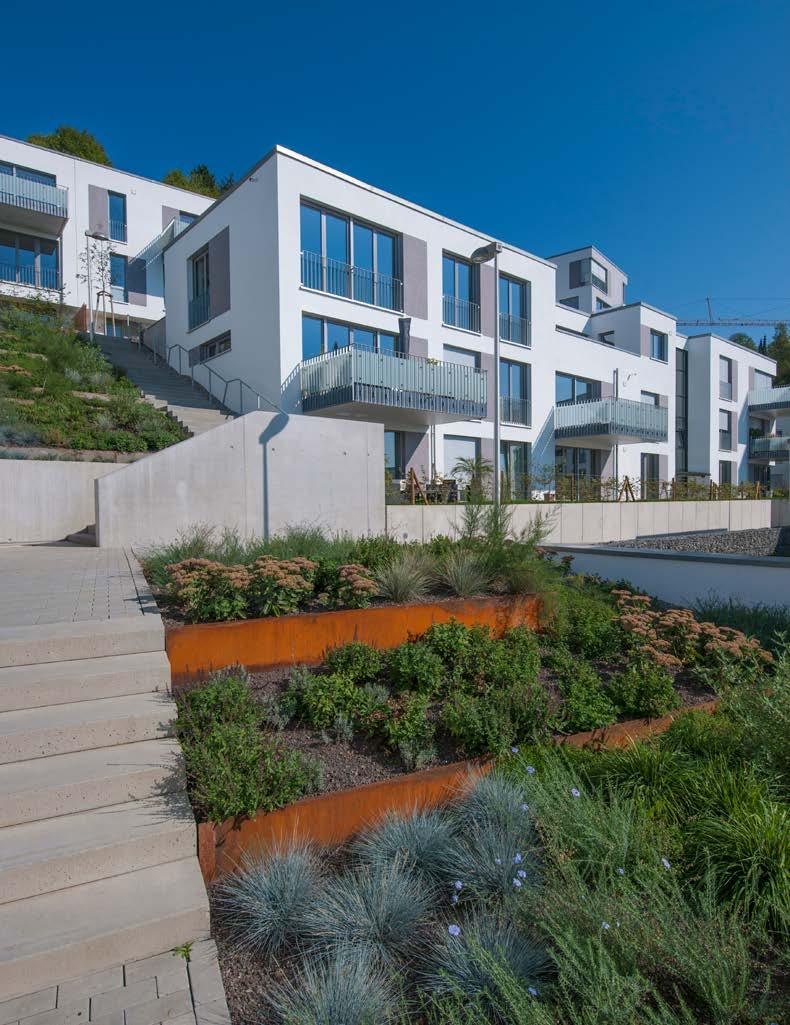
We are reducing the carbon intensity of our AAC and CSU products through our sciencebased target and our pathway to net-zero emissions by 2050
The decarbonisation of Europe’s buildings is essential to achieving the EU’s target of a 55% reduction in GHG emissions by 2030 compared to 1990 levels, and to become the first climate neutral continent by 2050.
SDG 7
Affordable and clean energy
SDG 11
Sustainable cities and communities
SDG 17
Partnerships for the goals
H+H’s commitments
• By 2030, reduce Scope 3 GHG emissions 22% per m3 by 2030 from a 2019 base year.
• By 2050, achieve net-zero emissions in H+H products
In Europe, the use of buildings alone accounts for around 40% of Europe’s energy consumption and 36% of CO2 emissions1. Around one third of the emissions come from the manufacture of building materials and the construction and demolition processes. Together, these represent a large and cost-effective opportunity to reduce the EU’s overall emissions.
Capturing the opportunity
We are committed to supporting the EU’s climate targets and the sustainable transformation of Europe’s cities and communities. The characteristics of our AAC and CSU products enable improved indoor climate, better acoustics, and enhanced energy efficiency in homes, apartments, offices, and other buildings. In addition, the products deliver fire safety benefits, are long-lasting, and can be integrated into a circular economy.
The new energy and carbon emissions for the English Building Regulation towards a ‘Future Homes Standard’ is a good example of ambitious legislative actions to be implemented. The Government mandates a 30% cut in carbon for new homes. The first stage of the legislation 1 https://ec.europa.eu/info/news/focus-energy-efficiency-buildings-2020-feb-17_en
will come into force in June 2022, with a transition period to allow for planning applications that are in progress at the time. Our customers can meet these tight demands using our products in their design of the buildings.
To deliver on the 2030 target of reducing Scope 3 emissions and thereby reducing the carbon intensity of our AAC and CSU products, H+H will implement the following CO2 reduction levers:
To capture the opportunity in sustainable buildings, we are reducing the carbon intensity of our AAC and CSU products and developing new sustainable products through the Group Innovation Function.
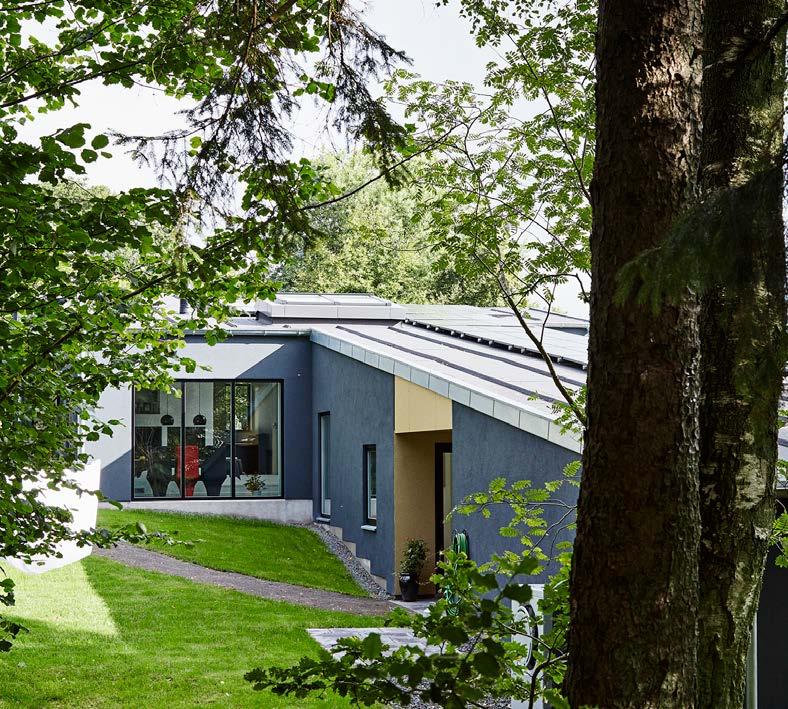
Decarbonising H+H’s AAC and CSU products
Our ten-year science-based target and our commitment to net-zero emissions by 2050 provide the framework to decarbonise our AAC and CSU products.
As outlined in the previous section, the majority of emissions in our AAC and CSU products lie “upstream” with the cement and lime producers and are part of our Scope 3, or indirect, emissions. This was established in the LCA that we undertook in 2020 which determined that our AAC and CSU products are on a path to achieve net-zero—and possibly negative— emissions by 2050. This was subsequently confirmed through the mapping of our GHG emissions at a company level in 2021.
H+H’s science-based Scope 3 target is an intensity target, not an absolute target, which relies on progress made by the cement and lime manufacturers in their own decarbonisation pathways.
1. Collaborating with cement and lime manufacturers
We will collaborate with cement and lime producers that have committed to a science-based target or a credible emissions reduction pathway. The Science Based Targets initiative industry pathway indicates an emissions reduction of approximately 19% by 2030 for cement manufacturers.
Since 2020, the European and global cement associations and leading manufacturers have published plans that put cement producers on a path to net-zero emissions by 2050. According to the plans, net-zero will be achieved mainly through the use of carbon capture storage and utilisation ("CCSU") and lower carbon ingredients, switching from fossil fuels to renewable energy to heat kilns, and through a process called recarbonation that occurs over the life cycle of cement-based products.
2. Reducing transport emissions
We will also work with transport suppliers that have committed to a science-based target or provide low emissions transport services. The emissions-reduction pathway for the transport industry requires transport companies to reduce emissions by ~31% by 2030. As the haulage is heavy duty, the most advanced
technology is currently the use of hydrogen as fuel instead of diesel and gas-fuelled trucks. This will require a modernisation of the fleet on the market and expansion of the charging network for hydrogen together with a ramp-up of the capacity and generation of green hydrogen.
3. Reducing embedded emissions in fuels/electricity
Beyond these Scope 3 reductions, we have a number of levers to reduce our Scope 1 and 2 emissions that will also reduce the Scope 3 embedded emissions in the fuels and electricity that we use in our operations —these are outlined in the Climate & Environment section.
in the form of avoided emissions as they reduce the energy required for heating during a building’s use phase. However, these benefits were not quantified in the LCA as although the thermal insulation benefits can be taken into account in EPDs, the current standardised EPDs do not include it.
quality and to make the practice of recycling economic for manufacturers or third-party recyclers. In this regard, we are supporting efforts to standardise circular processes at an industry-association level and through EU legislation.
4. Other levers: recarbonation and thermal benefits
Through recarbonation, cement-based products absorb CO2 during their lifespan, acting as permanent carbon sinks during the use phase of a building and when it is pulled down and recycled.
Recarbonation occurs over the full lifespan of our products and is recognized in the standardised Environmental Product Declarations ("EPDs") for AAC and CSU products. This was used to undertake the LCA in 2020 that determined the pathway to net-zero by 2050. However, recarbonation is not recognised by the Science Based Targets initiative and will therefore not contribute to the 2030 target.
Similarly, the thermal insulation benefits of our AAC products have the potential to drive even further gains
Developing new sustainable products
In addition to decarbonising our products, we have established a Group Innovation Function which will further enhance the application of existing products and develop new sustainable products. This includes the development of products as well as applications to support passive houses and other energy efficient building solutions.
Supporting a circular economy
We support the principles of a circular economy and through our Group Innovation function, we are investigating the recycling and re-use of raw materials from AAC and CSU products. Waste occurring in the production process, from construction sites, and from demolition rubble has the potential to be recovered and re-used as aggregate in the production of AAC and CSU products. By replacing some of the lime and cement raw materials, the recycled aggregate has the potential to reduce overall lifecycle emissions.
However, there are a number of challenges in recovering and sorting AAC and CSU waste from construction and demolition sites that must be resolved in order to provide aggregate of a consistent
Internally, H+H has three sub-streams focussing on how to advance the circular economy on a practical level:
A ‘no waste of virgin materials’ principle with maximum utilisation of waste in our own production. This is ingrained in the factory layout of any modern factory and in a self-assessment the score is high.
A ‘Brick-to-brick’ approach where AAC waste from construction and demolition sites is being re-introduced into the production mix. This can be done at a limited volume, but the value chain for such an approach needs to mature. This is both in regards to the practical handling of the logistics and the cleanliness of the returned materials. Increased costs for handling of waste and increased requirements for recycled materials in new buildings will help mature this sub-stream.
A ‘Building-to-building’ approach where AAC and CSU waste from demolition of old buildings is being introduced into a new block type. This is currently on a R&D-level as a part of the initiatives in the Group Innovation function.
• No waste of virgin materials
• Brick-to-brick
• Building-to-building
Climate & environment
Our ambition is to significantly reduce our Scope 1 and 2 emissions and continuously improve our resource use
SDG 7
Affordable and clean energy
SDG 9
Industry, innovation and infrastructure
SDG 12
Responsible consumption and production
H+H’s commitments
• We commit to reduce absolute Scope 1 and 2 GHG emissions by 46% by 2030 from a 2019 base year, equivalent to a 4.2% reduction each year
• Reduce energy consumption per m3 by 7% vs. 2019 base line of 565 MJ per m3 by 2024
• Reduce water usage by 5% by 2024 vs. 2019 base line of 382 litres per m3
• Achieve zero waste to landfill by 2024
• Achieve net-zero emissions in H+H’s operations by 2050
Reducing Scope 1 and 2 emissions
We are comitted to taking responsibility for our own environmental footprint, and to decouple it from growth by reducing emissions from our own operations and improving our use of resources.
H+H’s Scope 1 and 2 emissions are significantly lower than the upstream Scope 3 emissions associated with the production of cement and lime and have the advantage of being within our direct control to reduce.
The boilers that generate steam to autoclaves in our factories use gas and coal as the primary fuel sources. Therefore, switching to lower-carbon energy sources offers the greatest impact to reduce Scope 1 and 2 emissions.
H+H is targeting a 46% reduction in Scope 1 and 2 emissions by 2030 through three reduction levers:
1. Optimising equipment
As factories are upgraded and equipment is replaced, there are inherent energy reductions that will be harvested. Such upgrades and modernisations are essential in having an optimised manufacturing footprint and equipment and the investments will not solely rely on sustainability decision criteria. In addition, dedicated ESG investments to lower water and energy consumptions and reduce carbon emissions have been planned. These include targeted investments to insulate pipes, autoclave doors, and to replace the most energy-consuming equipment.
2. Improving energy mix
The current energy infrastructure has been chosen based on its cost profile. Alternatives that will reduce the carbon emissions and investments are divided into three main categories. These are expected to:
Phase out purchase of steam generated from coal
Reduce the number of coal-fired factories by converting the fuel source to relatively more carbon light alternatives
Convert the best located factories to hydrogen
3. Increasing the share of renewables
Over the coming years our purchase of electricity will increase to 100% renewable electricity through either Renewable Energy Certificates ("RECs") or Power Purchase Agreements ("PPAs").
Energy efficiency
Our existing short-term target is to reduce energy consumption per m3 by 7% by 2024 vs. a 2019 base line of 565 MJ per m3
Water management
Most of our factories are located in rural areas, and none in areas with extremely high water stress. Water is extracted from our own wells in accordance with relevant legislation and covered by permits. Two of our factories are located in areas with high water stress. We aim to continuously improve our water resource
management and have set a target to reduce water usage by 5% by 2024 against a 2019 base line of 382 litres per m3
Waste management
We have robust waste management practices through a “reduce, reuse, and recycle” approach. We continue to focus on waste and resource efficiencies and take practical steps in our operations to reduce waste. The continuous optimisation of recipes for products, recycling of failed batches and reduction of waste are integral parts of normal business procedures.
Biodiversity
We do not operate quarries and mines, except in Poland, where we operate a few sand pits to supply sand into our own manufacturing process. In line with our ESG policy, we are committed to ensuring that environmental responsibility is always considered when we do business and to complying with all environmental legislation with regards to operating the sand pits.
Access to sand
There is no shortage of sand as a raw material (availability)—but much of it is not suitable for current requirements, neither economic nor legal to extract (accessibility). With a strong governance in H+H’s major European markets, the substantial environmental problems resulting from sand extraction globally are absent. The constraint on sand resources
in Europe is not availability; it’s accessibility through legislative and environmental governance pressures.
Sand demand closely tracks overall economic performance. Predictions of future demand for sand in Europe are relatively coherent and also closely aligned with overall economic growth, growing at low single digit percentages annually—at least, prior to Covid-19. ‘Post Covid-19’ predictions from the European Aggregates Association suggest an overall EU/EFTA decline for 2020 of 15%, reducing 2020 total production to a level last seen at the end of the previous financial crisis in 2013.
This supports the arguments around our product portfolio as being sustainable and highly relevant as building materials for the future.
Climate & environment performance
In 2021, net CO2e Scope 1 and 2 emissions increased by 13,412 tonnes. The emissions are largely a factor of the energy consumption. This was predominantly driven by higher production volume, but also some cold winter months, more need to mill sand and output inconsistency.
Energy consumption increased by 9% from around 2.2 million GJ to 2.4 million GJ. The factories have
been running at almost full capacity utilisation, and the autoclaves have been on to secure output.
Unfortunately, output inconsistency has reduced the utilization of the autoclaves, and as a consequence of this the relative energy consumption has increased vs. 2020. In 2021, the Polish operation again managed to improve their energy consumption and is now the most energy efficient region within the Group.
The Scope 1 and 2 emissions intensity increased only slightly compared to 2020 helped by favorable mix effects and slight increase in share of renewable energy.
Climate & environment
202120202019
CO2e Scope 1 Tonnes139,304126,528
CO2e Scope 2 Tonnes46,339
CO2e Scope 3 Tonnes631.996590.991
CO2e Scope 1 (direct)
CO2e Scope 2 (indirect emissions from the generation of purchased energy)
CO2e Scope 3 (indirect emissions from
generation of purchased
consumption
energy
Fresh water consumption
Fresh water consumption
50,276
Lower water usage 8%
reduction in water intensity vs. base year 2019
Comparing 2021 to 2019 on which the 2024 target was set shows an improvement, both in absolute and relative terms. The production volume has increased with 1% and the absolute energy consumption decreased 1% over the two years.
The 7% reduction target is still within range as two factory upgrades was done in 2021 and another major upgrade is scheduled for 2022. This, together with minor investments and better utilisation will drive the relative consumption down over the next years.
Relative fresh water consumption decreased again in 2021 thanks to continuous focus on reducing waste and recycling more water and steam in the autoclaving process. The absolute increase is due to higher production volume.
Health, safety & people
We put safety first and strive for Zero Harm to our people, contractors, suppliers, and customers

All our factories have an 18-month 'Safety Improvement Plan' to drive the performance towards Zero Harm. We apply our safety management system across all acquisitions and is well-practiced in improving the safety culture and performance across locations that are new to the Group.
SDG 3 Good health and well-being
SDG 8
Decent work and economic growth
Local leaders are responsible for Health & Safety in their locations and are supported by safety officers and the Group Health & Safety leadership team. The leadership team is headed by our Group Chief Operating Officer, but the development of a robust safety culture is a continuous focus for all levels of management.
People performance
We take the management of safety risks inherent in our business very seriously and we continuously work to create safe and healthy workplaces and conditions for our employees.
This approach is guided by our Health and Safety Policy. In moving towards our Zero Harm ambition, we are embedding a culture of safety and applying our safety management system across all of our operations. Near-miss reporting and root cause analysis are mandatory activities to continuously improve our performance together with external and internal audits. All incidents are escalated to Group management level for information and guidance purposes.
In 2021 reduction of absence improved in line with the overall target to achieve nine days per FTE by 2024.
The reported numbers include absenteeism from longterm illness as well as Covid-19 absence.
Gender diversity and pay ratios stayed at levels similar to 2020.
The gender split across the Group has been relatively stable over the past few years with a 15% ratio of women to men. However, the proportion of women is higher at executive and middle-management levels and smaller among the production employees.
’# Here to Help’
Health
H+H’s commitment
• Reduce absenteeism to 9 days per annum by 2024, including absenteeism from long-term illness.
Covid-19 response
Covid-19 has continued to exert an influence on the business in 2021. All our factories remained open during the year, with the company maintaining best practice hygiene procedures and social distancing as defined by the relevant government guidelines. A close monitoring was kept on any positive cases within the workforce, resulting in all close contact colleagues isolating and testing until proven negative to minimise any risk to all other employees. This included contractors working within our facilities.
A key example of this is the ‘# Here to Help’ initiative in H+H UK. First launched in 2020, the initiative includes training and support of an internal team of dedicated mental health first aiders as well as a portal on the intranet with easy access to external resources. The team consists of colleagues who have all volunteered to serve as a first point of contact for anyone who is looking for support or someone to talk to. The first aiders are made visible with specific-coloured lanyards and the goal is to encourage a more open discussion about mental health and acknowledging that it is okay to not always be okay.
Absence reduction Managing absence is an essential part of managing health and well-being as well as developing and retaining a high-performing workforce. Levels of absence vary from region to region and with functional department within the company. We have developed a common approach to all absences, and this is used in all our regions. Targets for absence have been set to deliver an absence rate of 9 days a year on average in 2024.
• Upon their return to work, all employees have an informal return-to-work discussion with their manager to ensure they are coming back to work in a safe and controlled manner.

• Were appropriate, lighter duties are offered to employees to assist in their return to work as soon as is feasible.
• All long-term sickness cases are offered appropriate support to help them return to work as soon as they can.
As part of our efforts to manage the effects of the pandemic, we have also put additional emphasis on mental health across the Group, with various initiatives and campaigns depending on what was found to be most locally relevant.
• All absences are reported to HR via line management.
• All absences are assessed for any work-related causes.
23factories with zero incidents in 2021
Safety H+H’s commitment
• Reduce lost time incidents frequency (LTIF) to 3.5 by 2024
People
We aim to be an attractive employer to attract, retain and develop our workforce
Diversity
Safety performance
We had zero employee fatalities in 2021, marking the sixth consecutive year with no fatalities across the Group. LTIF improved from 6 in 2020 to 5, in line with the LTIF improvement target of 50% reduction of the accident rate over a five-year period based on 2017 actuals. The target is to achieve an LTIF of 3.5 in 2024. In 2021, 23 of the 31 locations recorded zero lost time incidents. Our Safety Improvement Strategy was relaunched and fully briefed to all employees. The communications programme emphasises what is needed to bring the key strategic areas to life. Further, internal auditors have been trained to enable the Maturity Audit Model to be assessed internally via self and peer audits, leading to better targeting of the Safety Improvement Plans
We seek to become an employer of choice by providing a safe and attractive work environment while improving diversity and inclusion. This is not only to remain competitive as an employer but to ensure that we continue to attract talent as Europe’s ageing and shrinking workforce is creating challenges in recruiting for manufacturing positions. Fewer young people are joining industries with factory-based production.
Therefore, continuous development of employees' competencies and personal development is key to helping them realise their potential and ambitions to the benefit of both the employees and H+H. To ensure this, 2021 saw the launch of the group-wide initiative H+H Behaviours, which aims to create a clear and shared understanding of what behaviours and competencies support achievement of our strategy and fuel performance.
The building-materials industry is not known for being diverse and we are addressing this by having an H+H Diversity Policy for the Group encouraging diversity at all levels of the organisation, without compromising on competence, qualifications, and quality. We recognise that diversity is a key competitive advantage and important to achieving success in a global environment.
We seek to be an attractive workplace for people with varied backgrounds, skills, and cultures. We are committed to providing equal opportunities in employment and always hiring the most qualified candidate for each of our recruitments, whether internal or external. We aim to recruit from a diverse mix of cultures, ages, backgrounds, skills, expertise, and experiences to create a dynamic organisation that continues to advance the H+H Group in line with our strategic objectives.
1.663
full-time employees
The behaviours have already been incorporated into some of our people processes and they will be further rolled out in 2022. With the implementation of a new Learning Management System across the Group and the launch of regional Employee Voices’ teams, we want to give employees a chance to discuss and voice their opinions on how to integrate the behaviours in their daily work life.
Every H+H manager is responsible for fostering an inclusive and open working climate where diversity can be embraced in accordance with the guidelines expressed in the H+H Diversity Policy and the Code of Conduct. We have a zero-tolerance approach to harassment. All H+H employees are encouraged to report any behaviour which is not in accordance with the Diversity Policy or Code of Conduct to their line manager, local management, or Group HR. Reports can also be filed through our online whistleblower system.
Board Diversity
H+H’s commitment
• Improve gender diversity within the Board of Directors of H+H International A/S to minimum 25-40% of the under-represented gender by no later than at the annual general meeting in 2023
Board diversity
To achieve the gender diversity target for our Board of Directors each gender shall be represented as follows:
• By at least one shareholder-elected board member, when the Board of Directors consists of a total of four shareholder-elected board members;
• By at least two shareholder-elected board members, when the Board of Directors consists of a total of five to seven shareholder-elected board members; and
• By at least three shareholder-elected board members, when the Board of Directors consists of a total of eight shareholder-elected board members.
If a male and female candidate for a position are equally qualified, the candidate representing the under-represented gender will be chosen. The gender diversity target for the Board of Directors was not achieved in 2021 as the number of female board members remained at one out of six members, since there were no changes to the board composition during 2021. At the annual general meeting on 31 March 2022, the Board of Directors will nominate a female candidate. Current member Pierre-YvesJullien (male) will resign. The total number of board members will therefore remain at six. If she is elected, our target to improve gender diversity will be met.

Business integrity
We conduct our business in a fair, ethical, and socially responsible manner
SDG 8
Decent work and economic growth
SDG 10
Reduced inequalities
The Code of Conduct includes principles related to confidentiality and insider trading, conflicts of interest, fraud, fair and lawful competition, bribery, political donations, entertainment and gifts, and money laundering. It also covers employees, business ethics, personal data protection, and sustainability.
of Human Rights and the International Labour Organization´s eight fundamental conventions.
We are committed to acting professionally, fairly, and with integrity in all our business dealings and relationships with consideration for the needs of all stakeholders, including customers, employees, shareholders, and wider stakeholders. To continuously ensure this commitment, the Regional Directors are required to sign a declaration every quarter that to the best of their knowledge, the H+H entities that they are responsible for are conducting business in a way that is compliant with all applicable H+H policies. The Board of Directors oversees compliance of the ESG policy.
Code of Conduct
The H+H Code of Conduct is the cornerstone of our compliance programme and sets the tone with regard to business integrity and ethical principles.
Every employee at H+H is required to adhere to the H+H Code of Conduct and managers are expected to serve as role models and inform and encourage colleagues to discuss openly how to follow the principles set forth in the Code of Conduct and the underlying specific policies.
Employees and stakeholders, such as suppliers and customers, are encouraged to speak up immediately in case of suspected violations to a relevant H+H Manager, Group HR, or for stakeholders to their point of contact in H+H. However, if circumstances are such that the whistleblower prefers to report in confidence, the whistleblower can also report their concerns— anonymously or non-anonymously—via H+Hs public online whistleblower system provided by a specialist third party provider of whistleblower solutions. All reports of suspected violations of the Code of Conduct or any underlying H+H policies and violations of law made in good faith are investigated, and retaliation against anyone who reports in good faith is not tolerated.
Human Rights
We strongly support the human rights and employee rights as set out in the UN Universal Declaration
The inherent risk for human rights violations is low due to the nature of the business. We only conduct business in countries with strong institutions. Most of the people working in our factories are directly employed by us, and consequently we can ensure that our staff are treated fairly and in accordance with the above said principles. Temporary staff are either employed directly by us or via reputable agencies who adhere to relevant employment legislation. To mitigate risks for violation of human rights throughout the value chain, we have a 'Code of Conduct for Suppliers'. No incidents were reported in 2021.
Anti-corruption
One of our underlying policies is the H+H Anticorruption Policy that provides principles and information related to bribery, facilitation payments, donations, and entertainment & gifts. The policy also includes a practical training element in the form of dos & don'ts on how to behave and be aware with regard to certain possible business situations as well as a description of a basic “is it, or is it not corruption” test to use if in doubt as to whether a specific situation could be corruption.
1 business integrity incident in 2021
Employees are asked regularly to read the Anticorruption policy and quizzes and similar training is carried out via our policy management system and learning management tools.
We have a zero-tolerance approach to corruption and consider the risk of corruptive behaviour to be relatively small considering the countries we do business in, as well as the fact that we are a building materials supplier only selling to builders' merchants and builders, meaning we do not participate in any public or private tenders in the construction business. We believe the main risk of corruptive behaviour concerns inappropriate types or levels of entertainment and gifts provided to our employees from potential or actual suppliers or provided by our employees to potential or actual customers with the intent of gaining special consideration or a business advantage.
Business integrity incidents
During 2021 there was one submission of a whistleblower report which was investigated thoroughly by an external specialist and found to be without merit. No other kinds of discovery in the Group of incidents relating to fraud, corruption, bribery, breach of antitrust/competition laws etc., as outlined in the Whistleblower Policy have been reported.
Governance and policies
ESG Governance
The Chief Strategy Officer is responsible for the development of H+H’s ESG strategy and reporting. In 2019 we established an ESG Committee to consider and make decisions on key ESG initiatives.
In 2020, risks related to climate change were incorporated into our Enterprise Risk Management (“ERM”) process as well as into the ERM system. The ERM Committee which oversees the ERM process and performs the scoping and development of overall risks strategies reports on assessed risks and mitigating actions to the Audit Committee of the Board of Directors.
Board of Directors
Audit Committee
The Audit Committee is currently comprised of 2 board members and is a permanent committee reporting to the Board of Directors. The Audit Committee is responsible for
other
overseeing the financial reporting, external audit, internal controls, and risk management. It also oversees non-financial reporting
Code of Conduct
Sustainability Report, Remuneration Report and Corporate Governance Re port). This is included in the
of
revised
final draft will be
Committee Charter currently being considered by the chair of the Audit Committee.
meeting
H+H Group management
March
ESG Committee Membership
Membership
ERM Committee
ESG Policy
Health & Safety Policy
Diversity Policy
Tax Policy
Whistleblower Policy
Data Ethics Policy
Remuneration Policy for the Board of Directors and the Executive Board
Responsibility
Code of Conduct is the cornerstone of our compliance programme and sets the tone with regard to our business integrity and ethical principles as well as being the foundation of all our other policies.
H+H currently has the following policies that are published on www.hplush.com:
ESG performance data
Environmental data
Unit 2021 20202019 2018 2017
CO2e Scope 1* Tonnes 139,304 126,528 148,692 134,791 86,024
CO2e Scope 2* Tonnes 46,339 45,703 50,27655,99246,998
CO2e Scope 3 Tonnes 631,996 590,991 678,840
CO2e Scope 1 (direct)* kg / m3 32 31 35 34 30
CO2e Scope 2 (indirect emissions from the generation of purchased energy)* kg / m3 11 11 12 14 16
CO2e Scope 3 (indirect emissions from the generation of purchased good and services) kg / m3 146 147 158
Energy consumption** GJ 2,396,080 2,195,3012,419,7312,350,9531,583,187
1. Percentage grid electricity % 10% 10% 10% 10% 11%
2. Percentage alternative % 0% 0% 0% 0% 0%
3. Percentage renewable % 4% 3% 3% 3% 5%
Total energy per m3** MJ 553 546 565 593 551
Water consumption m3 2.450.830 2.331.3162.638.3212.461.7851.810.776
1. Total fresh water withdrawn m3 1.519.616 1.446.3751.637.0941.535.7681.132.733
2. Percentage recycled % 60% 60%60%60%60%
3. Percentage in regions with High or extremely High Baseline Water Stress*** % 5% 6% 6% 7% 0%
4. Water reclaimed m3 23,240 19,311 19,089 0 0
Fresh water consumption per m3 Litres 351 359 382 387 394
Waste to landfill Tonnes 1,258 1,9321,409
Terestrial acreage disturbed Hectare 29 29
Percentage of impacted area restored % 75% 75%
Production volume:
- AAC Million m3 3.2 2.9 3.2 3.0 2.9
- CSU Million m3 1.1 1.1 1.1
Social data
Unit 2021 20202019 2018 2017
Full-time workforce FTE 1,663 1,5711,6361,6081,022
Gender diversity % 16% 15% 15% 14% 14%
Gender diversity, non-office workers % 6% 6% 6% 5%
Gender diversity, office workers % 47% 47% 44%44%
Gender diversity, Group Management % 20% 20%20% 0% 0%
Gender Pay Ratio (Median) Times 1.27 1.26 1.15 1.03
Gender Pay Ratio (Average) Times 1.10 1.15 1.20 1.20
Employee Turnover Ratio % 13% 14% 12% 13% 13%
Sickness Absence Days per FTE 12 13 13 10 9
Fatalities Headcount 0 0 0 0 0
Lost-time Incident frequency (LTIF)Incidents per mil hours 5 6 6 9 11
Total recordable incident rate (TRIR)Incidents per mil hours 35 38 43 50 90
Near Miss Frequency Rate (NMFR)Incidents per mil hours 2,988 2,712 2,265 1,364 543
Number of reported cases of silicosis 0 0 0 0 0
Customer Retention Ratio % 77% 76% 81% 79% 80%
* A more in-depth assessment of the Groups carbon emissions to ensure compliance with the GHG has led to changes in Co2e Scope 1 and 2 emissions for comparison figures for 2019 and 2020. The absolute emission for Scope 1 was last year reported as 142,834 and 118,980 for 2019 and 2020 respectively. The intensity was last year reported as 33 kg per m3 for 2019. The absolute emission for Scope 2 was last year reported as 54,689 and 51,533 for 2019 and 2020 respectively. The intensity was last year reported as 13 kg per m3 for 2019 and 2020.
Governance data
Volume Retention Ratio % 96% 98% 97% 95%99% Unit 2021 20202019 2018 2017
Gender diversity, Board % 17% 17% 17% 17% 17%
Board Meeting Attendance rate % 100% 97% 97% 96%98%
CEO Pay Ratio Times 37 35 39 39
Total amount of monetary losses as a result of legal proceedings as sociated with cartel activities, price fixing, and anti-trust activities DKK 0 0 0 0 0
For 2019 the reported number was 2,420,142 GJ and for 2020 it was 2,136,456. Total energy per m was reported as 548 in 2020.
By changing zoom from country to regional basis per country two factories are within areas with high water stress and comparison figures have been adjusted accordingly. In previous years the numbers were zero.
SASB Construction Materials standard, content index
Sustainability Disclosure Topics & Accounting Metrics
Topic Accounting metric Category Unit of measure Code
Greenhouse gas emission
Gross global Scope 1 emissions, percentage covered under emissions-limiting regulations
Discussion of long-term and short-term strategy or plan to manage Scope 1 emissions, emissions reduction targets, and an analysis of performance against those targets
Air Quality Air emissions of the following pollutants: (1) NOx (excluding N2O), (2) SOx, (3) particulate matter (PM10), (4) dioxins/furans, (5) volatile organic compounds (VOCs), (6) polycyclic aromatic hydrocarbons (PAHs), and (7) heavy metals
Energy Management
(1) Total energy consumed, (2) percentage grid electricity, (3)percentage alternative, (4) percentage renewable
Water Management (1) Total fresh water withdrawn, (2) percentage recycled, (3) percentage in regions with High or Extremely High Baseline Water Stress
Waste Management
Amount of waste generated, percentage hazardous, percentage recycled
Quantitative Discussion and analysis Metric tons (t) CO2-e, Percentage (%)
EM-CM-110a.1 EM-CM-110a.2
Page reference or disclosure Comment
Data table Acquired factories during 2021 excluded.
Comparison figures have been adjusted.
Scope I is updated to include emissions from NOx and SOx which was only partly included in the original figures.
Scope II has been updated to reflect activity-based efficiency factors..
Quantitative Metric tons (t) EM-CM-120a.1
H+H emits NOx, SOx and PM10 from steam boilers (exhaust fumes).
Systems not currently in place to capture data on a consolidated process. A formalised process to document this is expected to be implemented during 2022.
Quantitative Gigajoules (GJ), Percentage (%)
EM-CM-130a.1
Data table No alternative energy consumed, besides potential share from the electricity provided by grid. Share of renewable includes renewable from grid. Excluding share from grid ‘percentage renewable’ would be zero.
Quantitative Thousand cubic meters (m3), Percentage (%)
EM-CM-140a.1
Data table System improved to capture data regional level for high or extremely high-water stress has been implemented. Comparison figures adjusted accordingly.
Quantitative Metric tons (t), Percentage (%)
EM-CM-150a.1
Data table Non-conformative output from the production process can as a rule of thumb always be reused in production. Hence, only limited waste is created. Systems to capture historical volumes since 2019 implemented, hence 2019 numbers adjusted. For waste handled by a service provider the waste to landfill is estimated.
There is no hazardous waste.
Topic Accounting metric
Biodiversity Impacts
Description of environmental management policies and practices for active sites
Terrestrial acreage disturbed, percentage of impacted area restored
Category Unit of measure Code
Discussion and analysis
Quantitative
n/a Acres (ac), Percentage (%)
EM-CM-160a.1 EM-CM-160a.2
Page reference or disclosure Comment
P. 19 Data table
Workforce Health & Safety
(1) Total recordable incident rate (TRIR) and (2) near miss frequency rate (NMFR) for (a) full-time employees and (b) contract employees
Number of reported cases of silicosis
Product innovation Percentage of products that qualify for credits in sus tainable building design and construction certifications
Quantitative Quantitative Rate Number
EM-CM-320a.1 EM-CM-320a.2
Quantitative Percentage (%) by annual sales revenue
Data table Data table
Systems not currently designed on employee and con tractor level, so aggregated number is provided.
All reported numbers are measured per million hours produced.
Registration follows Anglo-Saxon practice.
EM-CM-410a.1
H+H’s products are not specifically certified under any of the frameworks in the standard.
Due to the longevity of the product, the thermal properties and predominantly consisting of sand, lime and water, H+H assumes to qualify for credits in most certification processes.
Further clarification will follow when H+H’s products will be included in the EU taxonomy definitions.
Total addressable market and share of market for prod ucts that reduce energy, water, and/or material impacts during usage and/or production
Pricing integrity & transparency
Total amount of monetary losses as a result of legal pro ceedings associated with cartel activities, price fixing, and anti-trust activities
Quantitative Reporting currency, Percentage (%) EM-CM-410a.2
H+H has estimates of the global markets, but due to large variations in product quality, building methods, access to raw materials, cost of substitute materials etc. it is not possible to verify reliable numbers in this regard.
Quantitative Reporting currency EM-CM-520a.1 Data table
Accounting principles
Reporting period
The reporting covers the period from 1 January 2021 to 31 December 2021.
Reporting scope
The report covers all entities under financial control by H+H International A/S as referenced in the Annual Report 2021 with the exception of factories and jointventures acquired during the year. The exception does not apply when calculating the number of full time employees.
The comparison figures do not include divested subsidiaries.
Reporting framework
The report was prepared using the Nasdaq ESG Guide 2.0 and the Sustainability Accounting Standards Board ("SASB") framework as guidance to determine report content. Where relevant, definitions have been adapted to generally accepted methodology in the United Kingdom and European Union.
Controls
Data regarding number of employees and gender are generated from our HR systems. Data regarding fatalities and accidents, energy consumption, waste and water usage are reported through the operations management system that follows normal financial processes to ensure consistency and is validated against the external financial reporting. The data is not subject to any formal internal auditing, but
verified through business analysis, benchmarks, and interviews.
Greenhouse gas protocol
As part of the science-based target setting process, H+H undertook a detailed mapping of our GHG emissions in accordance with the GHG Protocol. This included enhancements to the methodology as well as setting a recalculation policy and has led to adjustments to the 2019 base year GHG emissions that were previously reported.
Definitions Climate
• CO2e Scope 1 is calculated as combusted fuel type x conversion factor per fuel type. For 1 tonnes of coal a conversion factor of 20.64 to GJ is used
• CO2e Scope 2 is calculated as purchased MWh x conversion factor of 3.6 to GJ is used
• CO2e Scope 3 is calculated as purchased materials in scope x efficiency factor. Where efficiency factors are disclosed by the supplier this is used. If such are not available generic industry efficiency factors are applied
• CO2e per m³ (Scope 1) and CO2e per m³ (Scope 2) are calculated as Scope 1 and Scope 2 divided by production volume
• Water reclaimed is calculated using meter readings
• Total Energy is calculated as combusted fuel type x power factor per fuel type + used electricity
• Total Energy per m³ is calculated as Total Energy divided by production volume
• Total freshwater withdrawn is calculated using meter readings and invoices
• Percentage water recycled is calculated as Water recycled divided by Fresh water withdrawn where Water recycled is calculated indirectly as Water consumed according to bill-of-materials less Fresh water withdrawn
• H+H has three classifications for waste: green waste, white waste, and scrap. Waste to landfill is calculated as the total quantity of scrap sent to landfill by H+H. Reported data are based on invoices from external suppliers and estimates where data is not available
Diversity & equality
• Full-time workforce is defined as full-time employees + temporary workers
• Gender diversity is defined as (female FTEs + female temporary workers) divided by FTEs
• Gender diversity, Group Management includes the Executive Board and Senior Executives at H+H International A/S
• Gender pay ratio is calculated as median salary of male staff divided by median salary of female staff
• CEO pay ratio is calculated as CEO compensation divided by the median salary
Health & safety
• A fatality is a work-related injury that results in death
• Lost Time Incident Frequency (LTIF) measures the frequency of Lost Time Incidents and fatality incidents per million hours divided by total hours worked following the OSHA guidelines
• Near Miss Frequency Rate for employees ("NMFR") measures number of Near Miss Reports per million hours divided by total hours worked following the OSHA guidelines
Customer relations
• Customer retention ratio measures the number of customers invoiced during the year divided by the number of customers invoiced during the previous year
• Volume retention ratio measures how big a share of the sold volume that was invoiced to customers that also received invoices from H+H the year before
